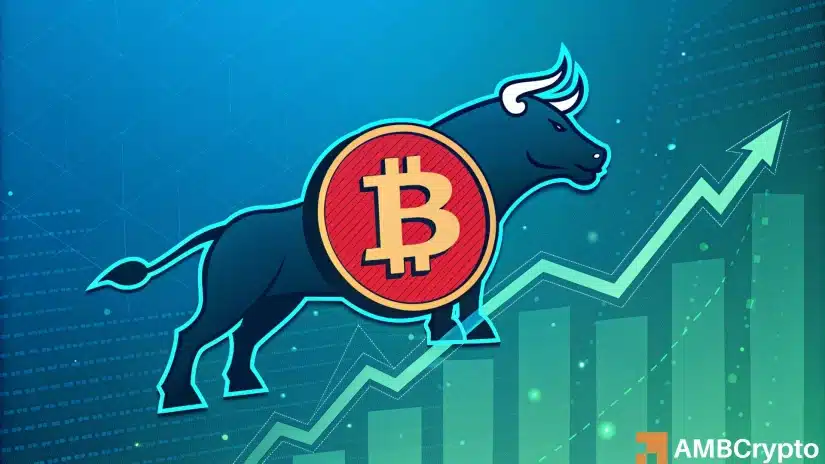- Bitcoin’s Realized Cap has reached unprecedented levels, signaling increased long-term investor confidence.
- Estimated leverage across exchanges is rising sharply, increasing the potential for liquidation-driven volatility.
Bitcoin’s[BTC] Realized Cap has surged to an all-time high, signaling strong on-chain accumulation and growing investor confidence.
As this metric continues its upward trajectory, it suggests that the market is absorbing Bitcoin at higher valuations.
The trend is typically a precursor to long-term bullish price action.
At the same time, estimated leverage across all exchanges is approaching yearly highs, raising the risk of liquidation cascades that could introduce volatility in the near term.
Bitcoin’s Realized Cap reaches new heights
The Realized Cap, a fundamental on-chain metric representing the total value of all Bitcoin at the price they were last moved, has reached an unprecedented level.
This uptrend, highlighted in the latest CryptoQuant chart, showed a steady increase in investor cost basis, indicating that more market participants are holding BTC at elevated price levels.
As of this writing, the Realized Cap was over $857.5 billion.


Source: CryptoQuant
Historically, a rising Realized Cap has been linked to strong accumulation phases. Similar patterns preceded significant bull runs in previous cycles as the broader market gained confidence in Bitcoin’s long-term value.
With BTC’s current market price hovering near $97,100, the ongoing increase in Realized Cap suggests that investors remain bullish despite short-term fluctuations.
Leverage nears yearly highs—Potential for liquidation events
While long-term accumulation remains a bullish indicator, short-term market dynamics are showing signs of heightened risk.
The Estimated Leverage Ratio across all exchanges has risen sharply, nearing levels last seen before previous market corrections.
At press time, it was around 0.25. This metric, which tracks the ratio of Open Interest (OI) relative to exchange balances, suggests that traders are increasingly using leverage to amplify their positions.


Source: CryptoQuant
As Bitcoin’s price hovers around key psychological levels, the high leverage ratio raises the probability of liquidation events.
If BTC experiences a sharp price movement, overleveraged positions could get wiped out, triggering a cascade of liquidations that could either accelerate a rally or deepen a pullback.
Key price levels to watch
From a technical standpoint, Bitcoin faces resistance near $100,000, a critical psychological barrier.
If BTC breaks above this level with strong volume, it could pave the way for further gains toward $105,000 and beyond.
On the downside, support levels at $92,000 and $89,000 remain crucial areas where buyers have historically stepped in.
Traders and investors should monitor these levels closely, particularly as leverage remains elevated. If OI continues to climb without a corresponding increase in spot buying, the market could be vulnerable to a sudden shakeout.
What next for BTC
From a technical standpoint, Bitcoin faces resistance near $100,000, a critical psychological barrier. If BTC breaks above this level with strong volume, it could pave the way for further gains toward $105,000 and beyond.
On the downside, support levels at $92,000 and $89,000 remain crucial areas where buyers have historically stepped in.
Traders and investors should monitor these levels closely, particularly as leverage remains elevated.
If OI continues to climb without a corresponding increase in spot buying, the market could be vulnerable to a sudden shakeout.







